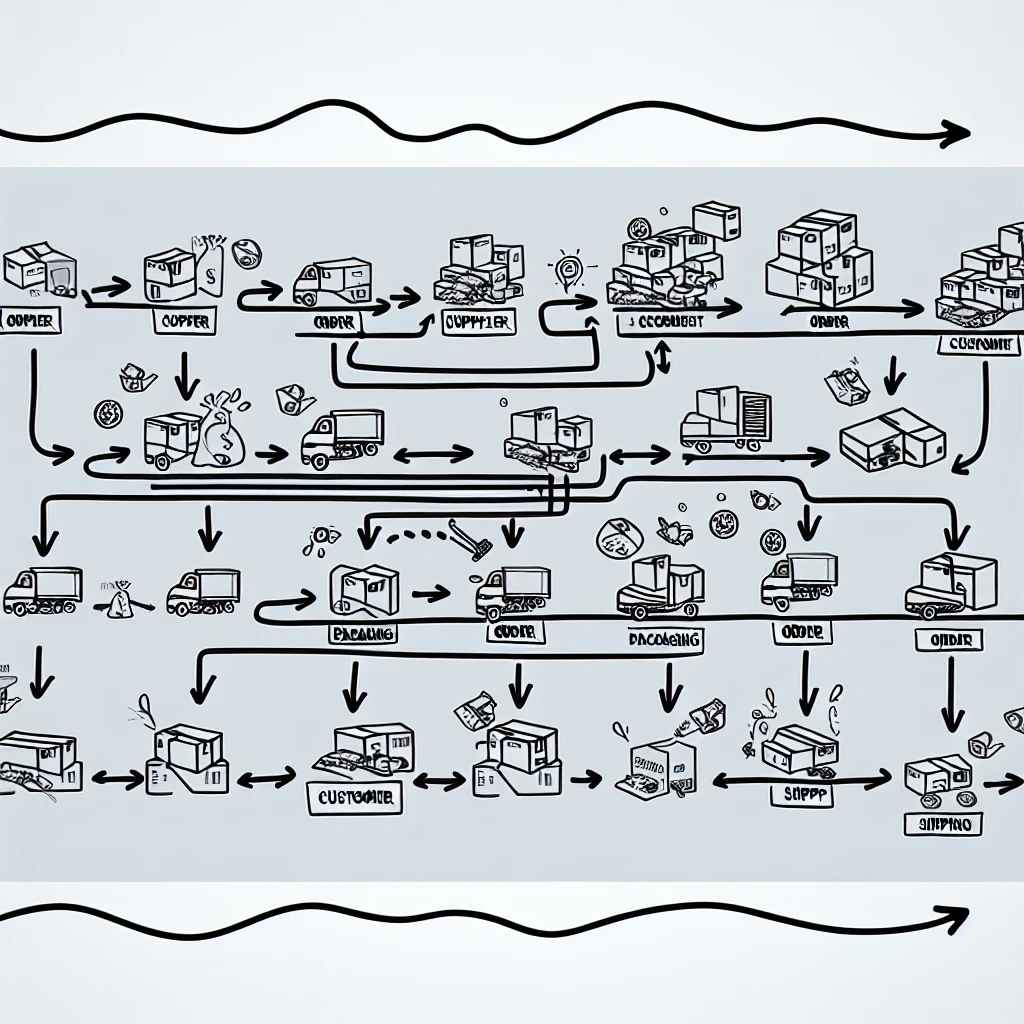Understanding Tax Deductions on Inventory
When it comes to ecommerce, savvy entrepreneurs know that inventory isn't just about stocking up on products to sell; it's also a strategic asset when navigating the complexities of tax deductions. Here's a pro tip: the cost of inventory can significantly reduce your taxable income, making it a powerful tool in your financial arsenal.
First off, let's demystify the concept of inventory costs. These aren't just the price tags on the goods you purchase for resale. Inventory costs encompass everything from the freight charges to get your products to your warehouse, to the storage fees, and even the labor costs associated with handling the goods. And here's the kicker: all these costs can potentially be deducted from your taxable income, lowering your tax bill.
But how exactly does this work? Well, when you buy inventory, it's initially recorded as an asset on your balance sheet. It's only when you sell the products that these costs transform into 'cost of goods sold' (COGS), which is a deductible expense. This means that the more you sell, the higher your COGS, and the lower your taxable income will be. It's a simple equation: higher sales equal more deductions, which equals less tax. It's like a discount on your tax bill, courtesy of your inventory investments.
However, don't get too carried away with the idea of stockpiling goods just for tax deductions. Remember, unsold inventory can tie up your cash flow and isn't tax-deductible until it's sold. It's a delicate balance to maintain - you want enough inventory to maximize deductions but not so much that it hinders your liquidity.
Lastly, staying on top of your inventory management is crucial. Accurate record-keeping ensures you can substantiate your deductions if the IRS comes knocking. Implementing a robust inventory management system can help track your costs and sales, making tax time less of a headache.
In conclusion, understanding and leveraging inventory costs for tax deductions is a smart move for any ecommerce business. It's a strategic approach that can lead to significant tax savings, but it requires a careful balance and meticulous record-keeping. So, keep a close eye on your inventory levels and costs, and watch as they work in your favor come tax season.
Sales Tax Compliance for Ecommerce
Now, let's dive into the labyrinth of sales tax compliance for ecommerce. Navigating the intricate web of sales tax regulations is akin to a strategic game, where knowing the rules can save you from costly penalties and keep your business in good standing. The rise of online sales has introduced a new layer of complexity, as you're no longer dealing only with the tax laws of your physical location but potentially those of every customer's locale.
Understanding sales tax compliance begins with grasping the concept of 'nexus.' This legal term essentially determines whether your business has a sufficient physical or economic presence in a state to warrant collecting sales tax from customers in that state. It's not just about where you are; it's about where your customers are, and where you're storing your inventory. The landmark South Dakota v. Wayfair, Inc. case in 2018 expanded the definition of nexus, meaning that even without a physical presence, your ecommerce operations could still be liable for sales tax collection.
But fear not, because with the right knowledge and tools, compliance can be less daunting. Each state has its own set of rules, and yes, it's as cumbersome as it sounds. However, technology comes to the rescue with various software solutions designed to automate tax calculations, collection, and remittance. Investing in such a system not only saves time but also reduces the risk of human error—a win-win for any ecommerce entrepreneur.
Moreover, it's not just about collecting sales tax; it's also about knowing the rates, which can vary widely even within a single state. You need to be up-to-date with the tax rates of the jurisdictions you're selling into. This requires diligence and a proactive approach to stay ahead of any changes. And when it comes to filing, timing is everything. Each state has its own deadlines and frequencies for sales tax filing, which can range from monthly to annually. Missing a deadline is not an option unless you fancy a tangle with penalties.
In the grand scheme of things, sales tax compliance is a testament to your business's growth and reach. It's a sign that your ecommerce venture is expanding its horizons and, while it may seem burdensome, it's a necessary part of responsible business ownership. Embrace the challenge, equip yourself with the right tools, and you'll navigate this complex terrain with confidence and compliance.
IRS Regulations on Inventory Accounting
When it comes to the Internal Revenue Service (IRS) and inventory accounting, ecommerce businesses must tread carefully. The IRS has clear and stringent regulations that determine how inventory costs are reported and taxed. Understanding these rules is crucial for maintaining compliance and optimizing your tax position.
Firstly, the IRS requires businesses to value their inventory at the beginning and end of each tax year to determine the cost of goods sold (COGS). This is essential for reporting income accurately. There are several methods permitted by the IRS for inventory accounting, including First-In, First-Out (FIFO), Last-In, First-Out (LIFO), and the Average Cost method. Each method can significantly affect your reported income and tax liability, so choosing the right one aligns with your financial strategy is vital.
For instance, FIFO assumes that the oldest inventory items are sold first, which can be beneficial in times of rising prices as it results in lower COGS and higher taxable income. Conversely, LIFO assumes the newest items are sold first, potentially reducing taxable income during inflationary periods. However, it's worth noting that LIFO is not allowed everywhere; it's prohibited under International Financial Reporting Standards (IFRS), which can affect multinational ecommerce businesses.
The IRS also imposes specific rules for inventory write-downs or write-offs. If your inventory loses value due to damage, obsolescence, or market changes, you may be able to reduce your taxable income by writing down the inventory to its market value. However, this must be substantiated with evidence, and the write-downs must be consistent with the method you've chosen for valuing inventory.
Another critical aspect is the uniform capitalization rules (UNICAP), which require certain direct and indirect costs to be included in either inventory or capitalized into the cost of property produced. For small businesses with gross receipts of $25 million or less in the preceding three years, there's an exemption from UNICAP, which can simplify accounting and reduce administrative burdens.
Lastly, it's important to keep meticulous records. The IRS may audit your inventory practices, and having detailed documentation can be your best defense. This includes keeping records of all purchases, sales, and inventory counts. In the digital age, leveraging inventory management software can be a game-changer, ensuring accuracy and ease in maintaining records.
In conclusion, while IRS regulations on inventory accounting can seem daunting, they are navigable with the right knowledge and tools. By understanding and applying the appropriate accounting methods and rules, ecommerce businesses can ensure compliance and potentially optimize their tax situation.







